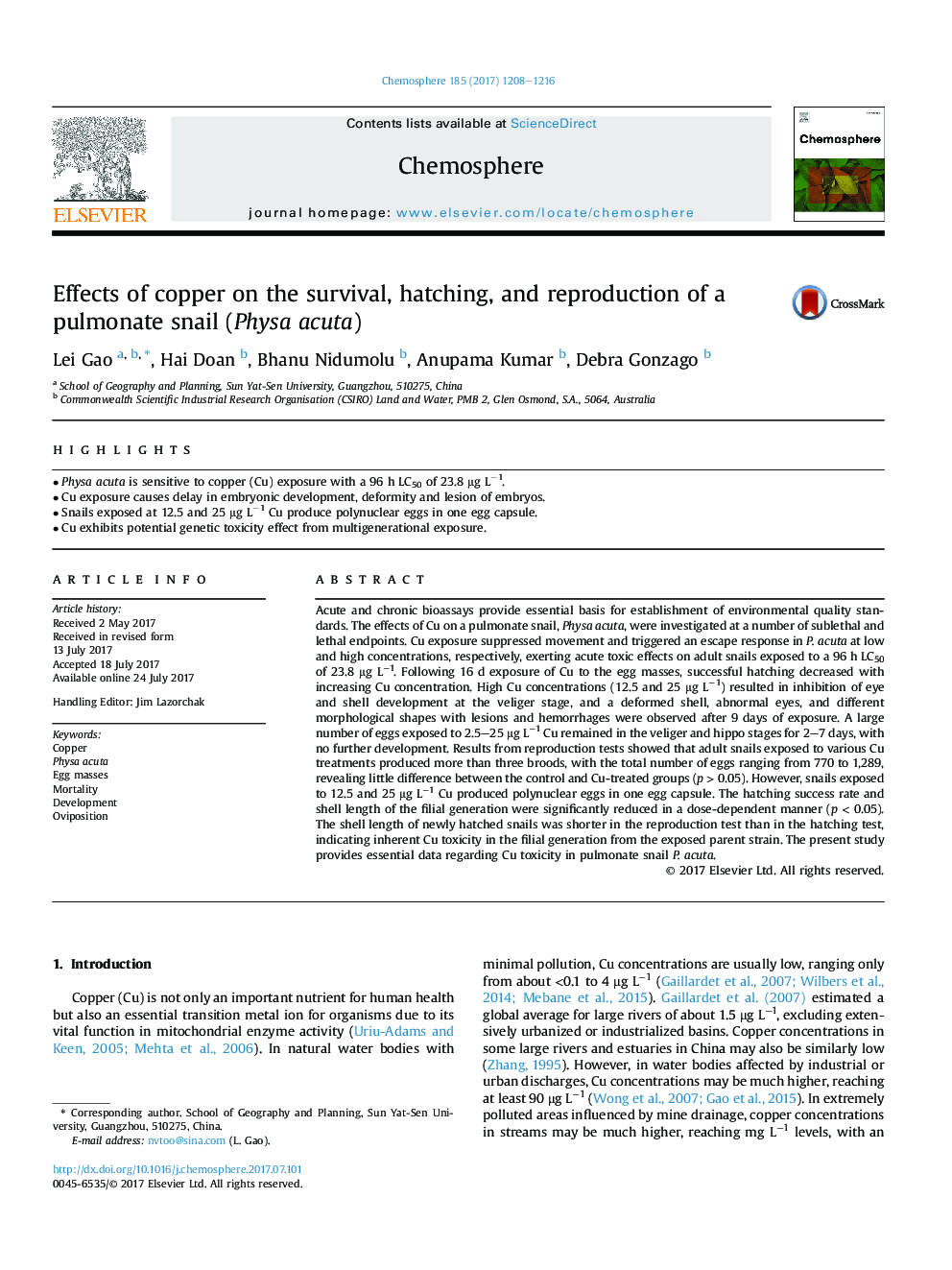| کد مقاله | کد نشریه | سال انتشار | مقاله انگلیسی | نسخه تمام متن |
|---|---|---|---|---|
| 5746771 | 1618786 | 2017 | 9 صفحه PDF | دانلود رایگان |

- Physa acuta is sensitive to copper (Cu) exposure with a 96 h LC50 of 23.8 μg Lâ1.
- Cu exposure causes delay in embryonic development, deformity and lesion of embryos.
- Snails exposed at 12.5 and 25 μg Lâ1 Cu produce polynuclear eggs in one egg capsule.
- Cu exhibits potential genetic toxicity effect from multigenerational exposure.
Acute and chronic bioassays provide essential basis for establishment of environmental quality standards. The effects of Cu on a pulmonate snail, Physa acuta, were investigated at a number of sublethal and lethal endpoints. Cu exposure suppressed movement and triggered an escape response in P. acuta at low and high concentrations, respectively, exerting acute toxic effects on adult snails exposed to a 96 h LC50 of 23.8 μg Lâ1. Following 16 d exposure of Cu to the egg masses, successful hatching decreased with increasing Cu concentration. High Cu concentrations (12.5 and 25 μg Lâ1) resulted in inhibition of eye and shell development at the veliger stage, and a deformed shell, abnormal eyes, and different morphological shapes with lesions and hemorrhages were observed after 9 days of exposure. A large number of eggs exposed to 2.5-25 μg Lâ1 Cu remained in the veliger and hippo stages for 2-7 days, with no further development. Results from reproduction tests showed that adult snails exposed to various Cu treatments produced more than three broods, with the total number of eggs ranging from 770 to 1,289, revealing little difference between the control and Cu-treated groups (p > 0.05). However, snails exposed to 12.5 and 25 μg Lâ1 Cu produced polynuclear eggs in one egg capsule. The hatching success rate and shell length of the filial generation were significantly reduced in a dose-dependent manner (p < 0.05). The shell length of newly hatched snails was shorter in the reproduction test than in the hatching test, indicating inherent Cu toxicity in the filial generation from the exposed parent strain. The present study provides essential data regarding Cu toxicity in pulmonate snail P. acuta.
Journal: Chemosphere - Volume 185, October 2017, Pages 1208-1216